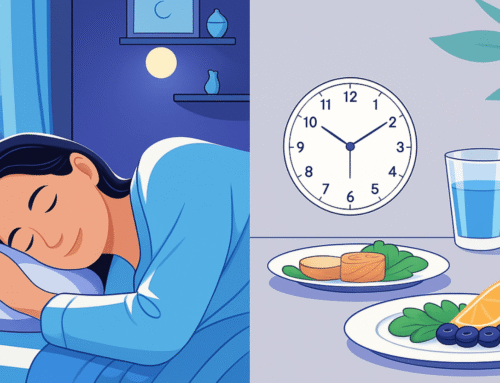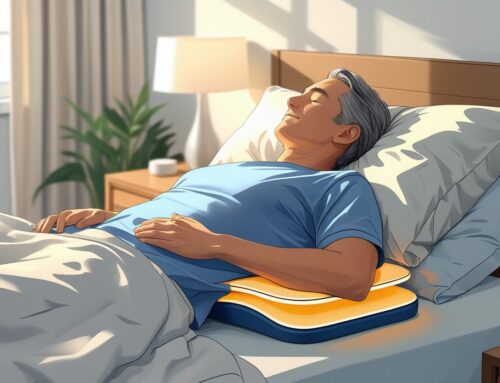Many people struggle to fall asleep or stay asleep through the night. One effective method to improve sleep quality involves listening to specific sound frequencies. The best frequencies for sleep tend to be low to mid-range tones like 432 Hz and 528 Hz, which promote relaxation and reduce stress.
These frequencies calm the mind and body, which makes it easier to drift off naturally. Sounds such as binaural beats or Solfeggio tones at these frequencies encourage emotional balance and physical healing, which supports deeper and more restful sleep.
Using these frequencies regularly before or during bedtime improves overall sleep quality. Combining them with habits like a comfortable mattress and a quiet environment enhances the benefits, helping people wake up feeling refreshed.
Key Takeaways
- Certain sound frequencies help the body relax and prepare for sleep.
- Listening to tones like 432 Hz and 528 Hz promotes deeper rest.
- Using sound frequencies alongside healthy sleep habits improves sleep quality.
- A medium-firm mattress with targeted support combined with low-frequency sounds such as delta waves (1–4 Hz), creates the ideal conditions for deeper and more restorative sleep.
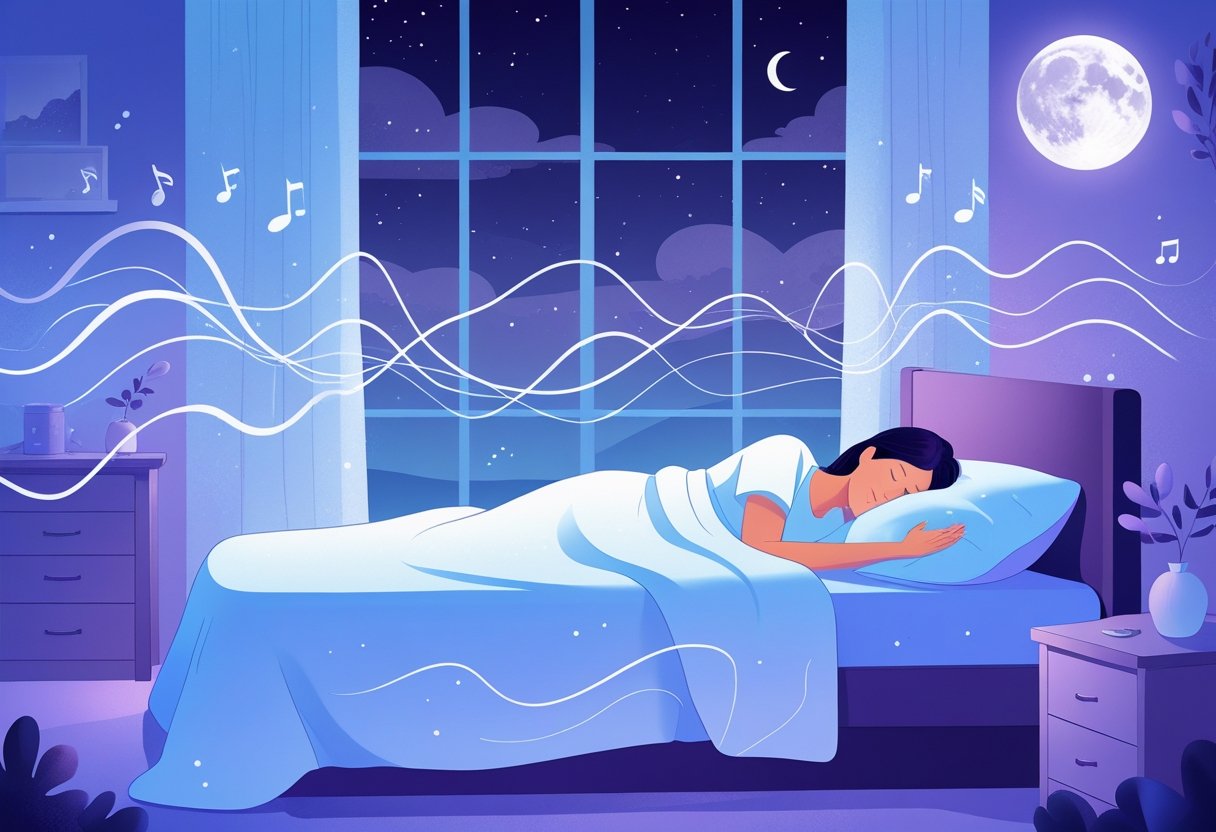
Understanding Sleep Frequencies
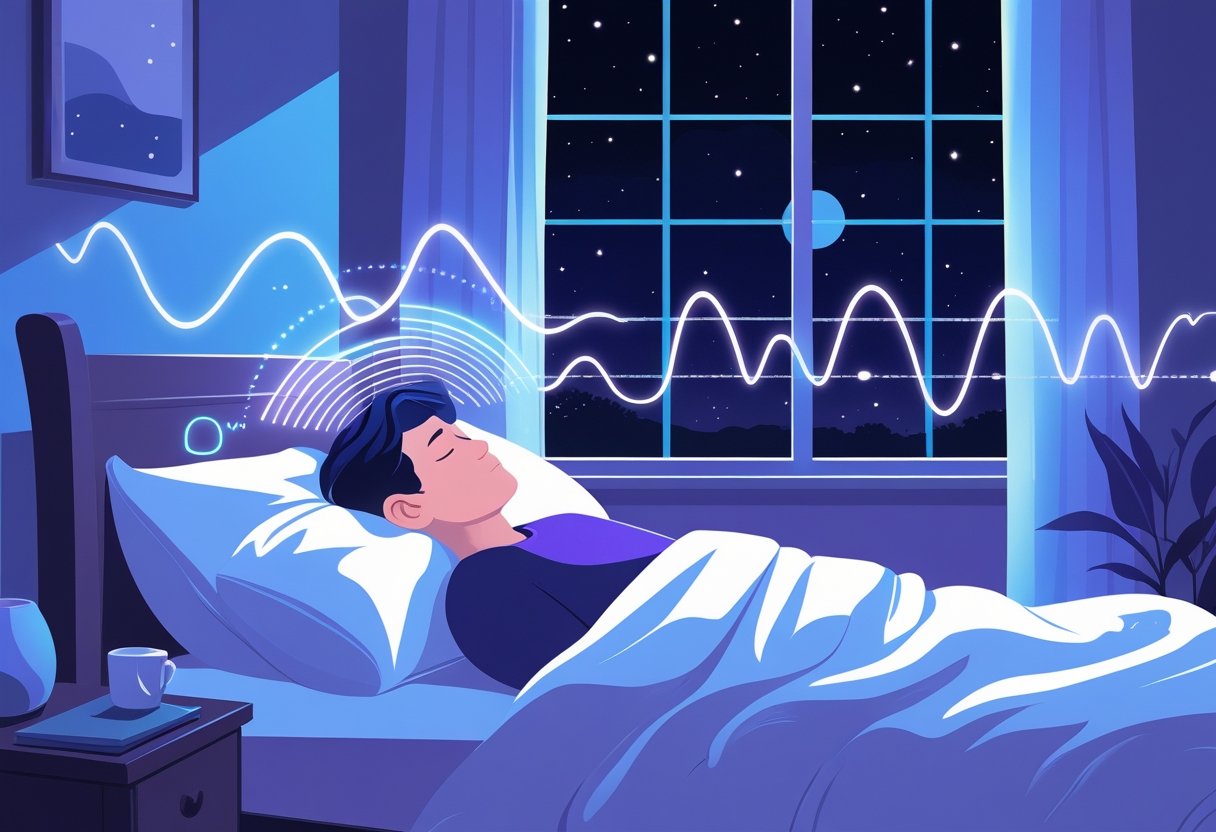
Different sound frequencies affect the brain and body in specific ways, influencing how easily a person falls asleep and the quality of their rest. Understanding which frequencies promote relaxation and deep sleep improves sleep patterns naturally and safely.
What Frequency Helps You Sleep
The best frequency for sleep generally falls in the low to midrange of hertz (Hz). Frequencies around 432 Hz and 528 Hz often link to calming effects and reduced stress before bedtime. Listening to sounds at these frequencies for 15-20 minutes can induce sleep and extend deep sleep stages.
Lower frequencies, such as those in the delta range (0.5 to 4 Hz), connect to deep and dreamless sleep. Binaural beats or white noise machines set to these frequencies provide a soothing background that encourages quicker sleep onset.
The Science Behind Sleep Frequencies
Frequencies influence brain activity and nervous system responses. Frequencies like 432 Hz may lower cortisol (the stress hormone), which promotes relaxation and prepares the body for sleep. Music or sounds tuned to these frequencies shift brainwaves into calmer states.
Scientific studies show exposure to certain sound frequencies before sleep increases time spent in restorative deep sleep stages (Stages 3 and 4). This suggests the best hertz for sleep supports brain functions that regulate relaxation and recovery.
Brainwave States and Sleep
Brainwaves vary in frequency depending on sleep stages. Delta waves (0.5–4 Hz) dominate deep sleep, essential for memory consolidation and tissue repair. Theta waves (4–7 Hz) appear during light sleep and the transition into deeper rest.
Using sound frequencies that mimic these brainwave states, such as binaural beats designed at delta or theta frequencies, guides the brain toward sleep more easily. This targeted method offers a natural way to improve sleep quality without drugs.
Most Effective Frequencies for Sleep
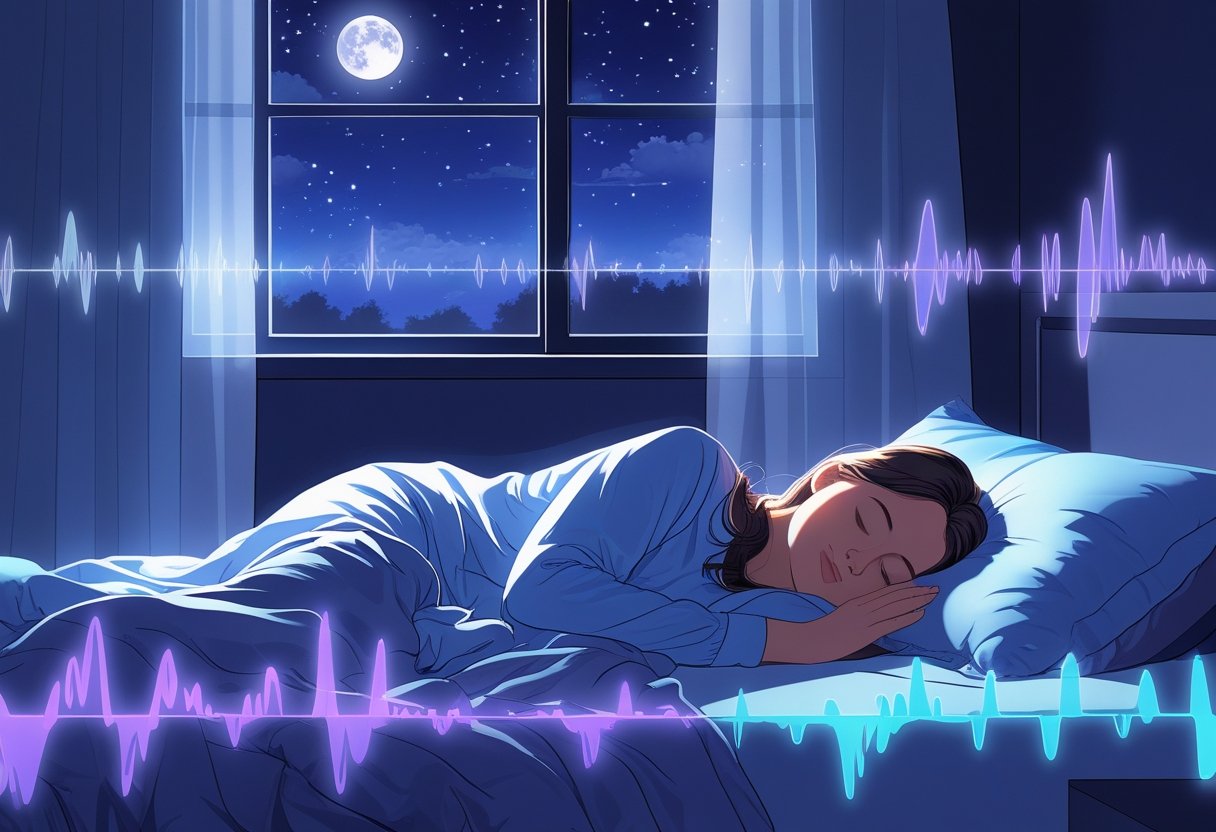
Certain sound frequencies improve sleep quality by influencing brain activity. These frequencies target different sleep stages and promote relaxation, especially during deep and light sleep phases.
Delta Waves (0.5-4 Hz) for Deep Sleep
Delta waves represent the slowest brain waves and occur during the deepest stages of sleep. Sounds in the delta frequency range (0.5 to 4 Hz) encourage the brain to enter restorative deep sleep phases, also known as stages 3 and 4. This stage remains crucial for physical healing and memory consolidation.
Listening to delta frequency tones before or during sleep helps people fall into these deep sleep stages faster and maintain them longer. Many sleep aids use these frequencies because they correspond with natural brain activity during deep rest.
Theta Waves (4-8 Hz) and Light Sleep
Theta waves occur mainly in light sleep and the early stages of the sleep cycle. Frequencies between 4 and 8 Hz link to relaxation and the transition from wakefulness to sleep. These waves calm the mind, reduce stress, and support creative thinking.
Using theta frequency sounds proves useful for those who struggle to fall asleep, as they slow brain activity gently and prepare the body for deeper sleep phases. This range often appears in sleep and meditation music.
3 Hz Frequency Benefits
A frequency around 3 Hz falls within the delta wave range and associates with deeper, more restorative sleep. Listening to 3 Hz tones increases the time spent in deep sleep, thus improving overall sleep quality.
Research shows that playing 3 Hz sounds for 15 to 20 minutes before bed triggers deeper sleep stages. This frequency lowers heart rate and reduces brain activity to support long-lasting rest. It stands as one of the top candidates for the best frequency for sleep among people seeking improved sleep depth and recovery.
Solfeggio Frequencies and Sleep
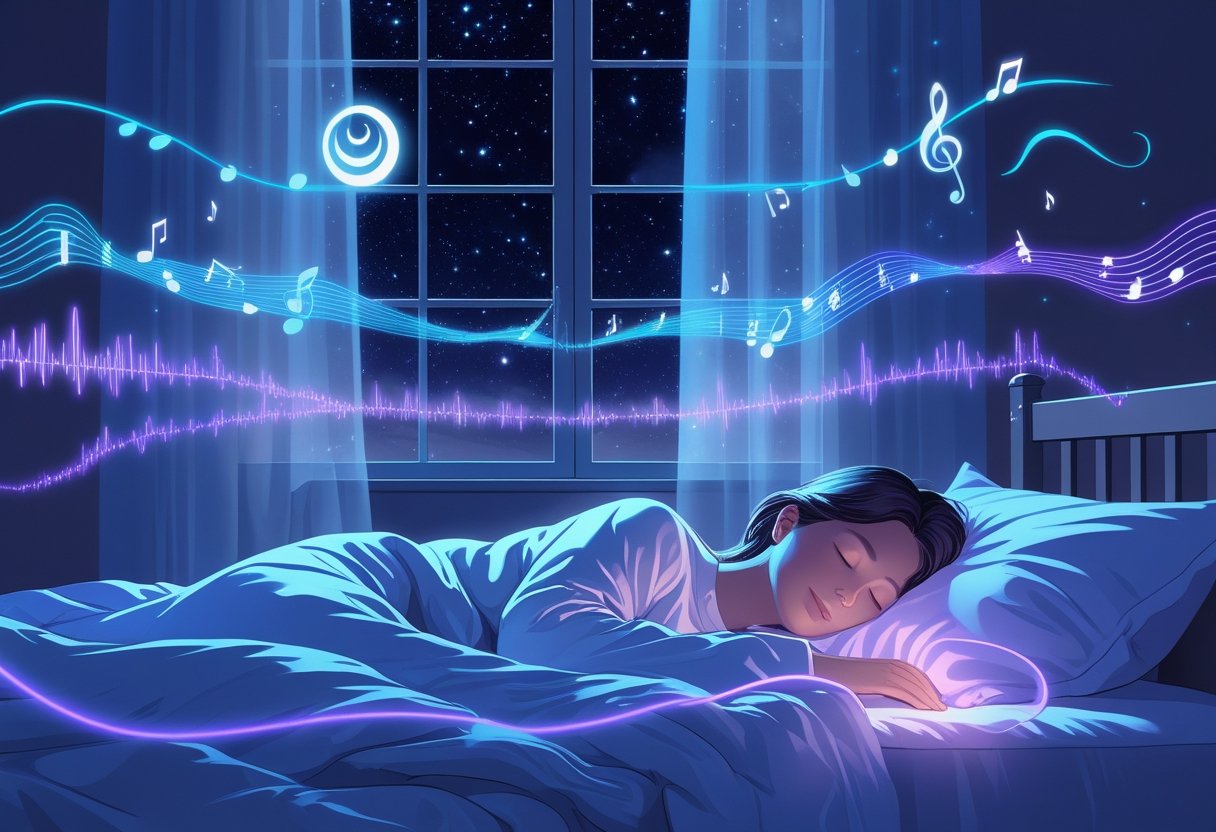
Certain sound frequencies, known as Solfeggio frequencies, influence sleep quality and promote relaxation. These tones reduce stress and support healing during rest. Some frequencies stand out due to their specific effects on calming the mind and body.
Popular Solfeggio Frequencies for Sleep
The most commonly used Solfeggio frequencies for sleep include 432 Hz, 528 Hz, and 174 Hz.
- 432 Hz often stands out as the best frequency for sleep because it creates a soothing, peaceful atmosphere. It helps listeners feel calmer and more relaxed.
- 528 Hz carries healing properties and improves emotional balance during sleep.
- 174 Hz is associated with reducing physical pain and encouraging deep relaxation.
These frequencies combine well with binaural beats or delta waves to further enhance sleep quality. Using Solfeggio frequencies for sleep provides a natural aid for falling asleep and staying asleep longer. For more detail on this, see Deepest Sleep Music 432Hz.
528 Hz and Its Effects
528 Hz serves as a key Solfeggio frequency linked to healing and stress relief. It earns the nickname “miracle tone” because of its effects on the body and mind during sleep.
Research suggests that 528 Hz repairs DNA and lowers stress levels, which contributes to a more restorative sleep cycle. It promotes emotional calmness and reduces anxiety, making it easier to fall asleep.
Many users find this frequency beneficial for both healing and improved sleep quality. It often appears in sleep music labeled as solfeggio frequency for sleep or healing. Although 528 Hz supports sleep well, it performs best when combined with other calming frequencies.
Solfeggio Frequencies for Healing and Restorative Sleep
Solfeggio frequencies serve not only for relaxation but also for physical and emotional healing during sleep. Frequencies like 432 Hz and 528 Hz promote restorative sleep by lowering stress and helping the body recover. These frequencies influence brainwaves, encouraging delta waves associated with deep sleep and body repair. Regular listening supports emotional balance and reduces nighttime stress.
People often ask, “Can I listen to solfeggio frequencies while sleeping?” The answer is yes. Many find these frequencies helpful as background sound during sleep without causing disturbance.
Combining Solfeggio frequencies with calming music or binaural beats strengthens their effects on healing and sleep restoration. For detailed insights on frequencies like 432 Hz and 528 Hz and their calming effects, check out the research on solfeggio frequencies for sleep.
Binaural Beats: How They Compare to Solfeggio Frequencies

Different sound frequencies affect the brain and body in unique ways. Understanding how these sounds work helps to choose the best type of audio for sleep and relaxation.
Binaural Beats for Better Sleep
Binaural beats use two slightly different tones, one in each ear, which the brain merges into a third, new frequency. This beat frequency does not reach the ears directly but is experienced inside the brain. It can influence brainwave patterns by encouraging states such as relaxation, focus, or deep sleep.
Typically, binaural beats for sleep focus on low frequencies around 1-4 Hz, corresponding to deep sleep brain waves. These sounds may reduce anxiety and improve sleep quality by guiding the brain into a sleep-friendly state.
Binaural Beats vs Solfeggio Frequencies
Solfeggio frequencies consist of single tones played directly and often link to specific healing benefits, like reducing stress or promoting calmness. These tones, such as 432 Hz and 528 Hz, reach the ears clearly.
By contrast, binaural beats depend on the brain to create the tone from two different frequencies. Therefore, binaural beats engage the brain’s processing differently than Solfeggio frequencies, which deliver a direct sound experience.
How to Use Frequencies for Improved Sleep
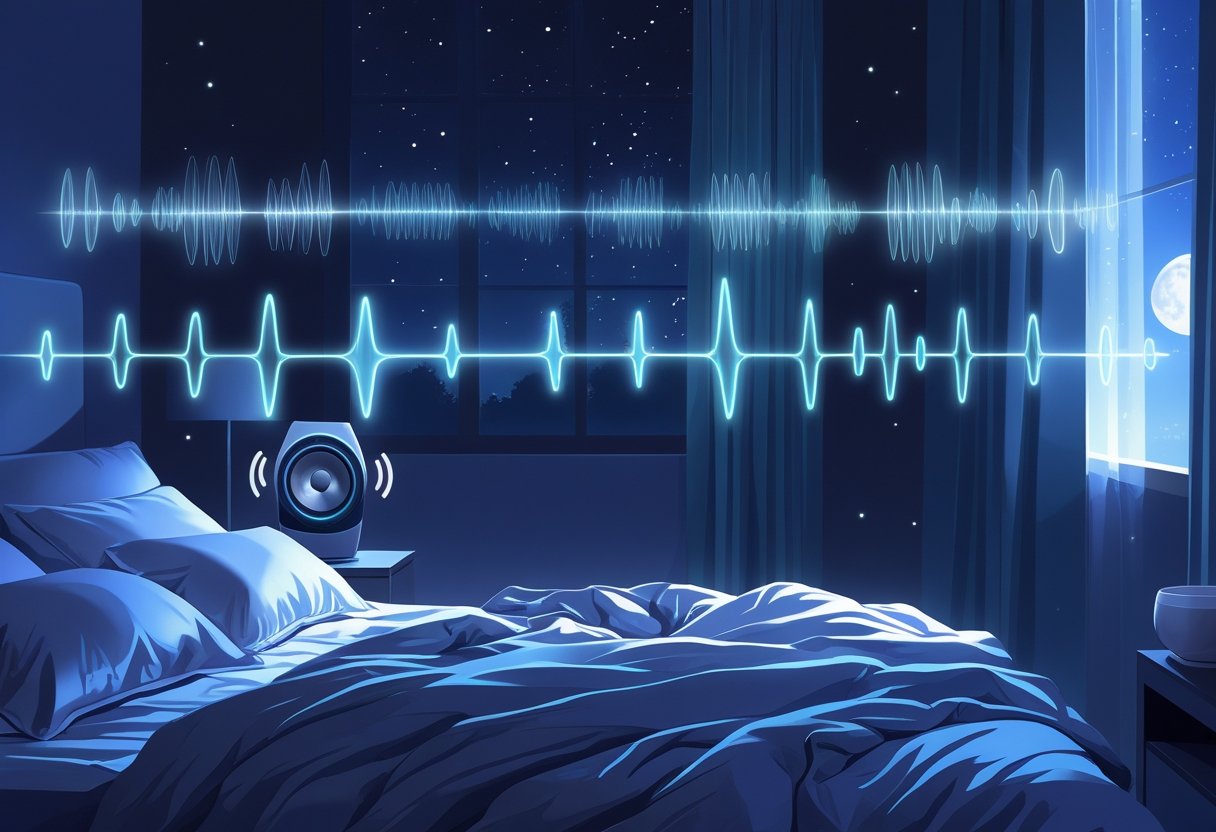
Using sound frequencies helps relax the mind and body before sleep. Choosing the right method to listen and following safety tips proves essential. This approach ensures the experience promotes better rest without causing discomfort or harm.
Best Practices for Listening
To achieve the best results, use headphones or speakers that deliver clear sound quality. Frequencies such as 528 Hz, 432 Hz, or delta waves (0.5-2 Hz) work well when played at low volume. Play the sound 20–30 minutes before bedtime while practicing relaxation exercises like deep breathing. This combination helps switch the brain into a calmer state. Maintaining a quiet and dark environment enhances the effect. Avoid layering multiple tracks; select one frequency and focus on it.
Listening to solfeggio frequencies during sleep is possible, but keeping the volume low remains important to prevent sleep cycle disruptions or ear fatigue.
Safety Considerations
Approach listening near sleep with caution. High volumes may damage hearing or cause headaches. Exercise care when using headphones in bed to prevent injury. Wireless headphones reduce risks of tangling or pressure on the ears.
Individuals with epilepsy or other medical conditions should consult a doctor before using frequency sounds, since some tones might trigger adverse reactions.
If discomfort, dizziness, or trouble sleeping occurs, stop using the frequencies immediately. Setting a timer to turn off the sounds after 30–60 minutes helps avoid playing all night, which could interrupt natural sleep stages.
Additional Sleep Tips and Complementary Practices
Using sound frequencies for sleep works best when combined with other methods and healthy habits. Consistent bedtime routines, limiting screen time, and lifestyle choices are essential in improving sleep quality.
Combining Frequencies with Other Sleep Aids
Listening to frequencies like 432 Hz or binaural beats in the delta range (1-4 Hz) works best when paired with calming practices. For example, dimming lights an hour before bed prepares the brain for rest. Using frequencies together with deep breathing or meditation further relaxes the mind and body. This combination reduces stress and helps reach deep sleep phases more easily.
Some find that using frequencies while avoiding caffeine or heavy meals close to bedtime increases their effectiveness. Creating a quiet, comfortable sleep space also supports the benefits of sound therapy.
Healthy Lifestyle Habits for Quality Sleep
Regular sleep and wake times train the body’s internal clock. Avoiding screen exposure at least one hour before bed allows the brain to reduce alertness. Exercise during the day improves sleep, but should be avoided right before bedtime. Diet also matters; limiting sugar and caffeine in the evening supports restful sleep.
Other practices include managing stress through journaling or relaxation exercises, which prevent restless nights. Altogether, these habits build a foundation that enhances how well sleep frequencies work.
How Mattress Design and Frequency Influence Sleep Quality
Mattress design is essential in sleep quality. A mattress that feels too soft or overly firm may lead to discomfort and interrupt restful sleep. Research shows that a medium-firm mattress typically supports better sleep by encouraging proper spinal alignment and limiting movement throughout the night.
Frequency contributes to sleep quality as well, especially when combined with thoughtful mattress design. Mattresses with adjustable features, such as zoned air control, also enhance sleep. These designs respond to different areas of the body and improve sleep efficiency. One study, for example, found that female participants experienced better sleep using an adjustable zoned air mattress, highlighting the importance of personalized support.
The Saatva Classic mattress is a great choice for anyone seeking better sleep through thoughtful design and personalized comfort. It comes in three firmness levels, and the Luxury Firm option provides a balanced and medium-firm feel that supports proper spinal alignment for achieving deeper and more restful sleep.
The mattress includes patented Lumbar Zone Technology, which reinforces the center third to support the lower back and encourage healthy posture throughout the night. This targeted support system relieves pressure points and helps minimize discomfort, which makes the mattress suitable for a wide range of sleepers.
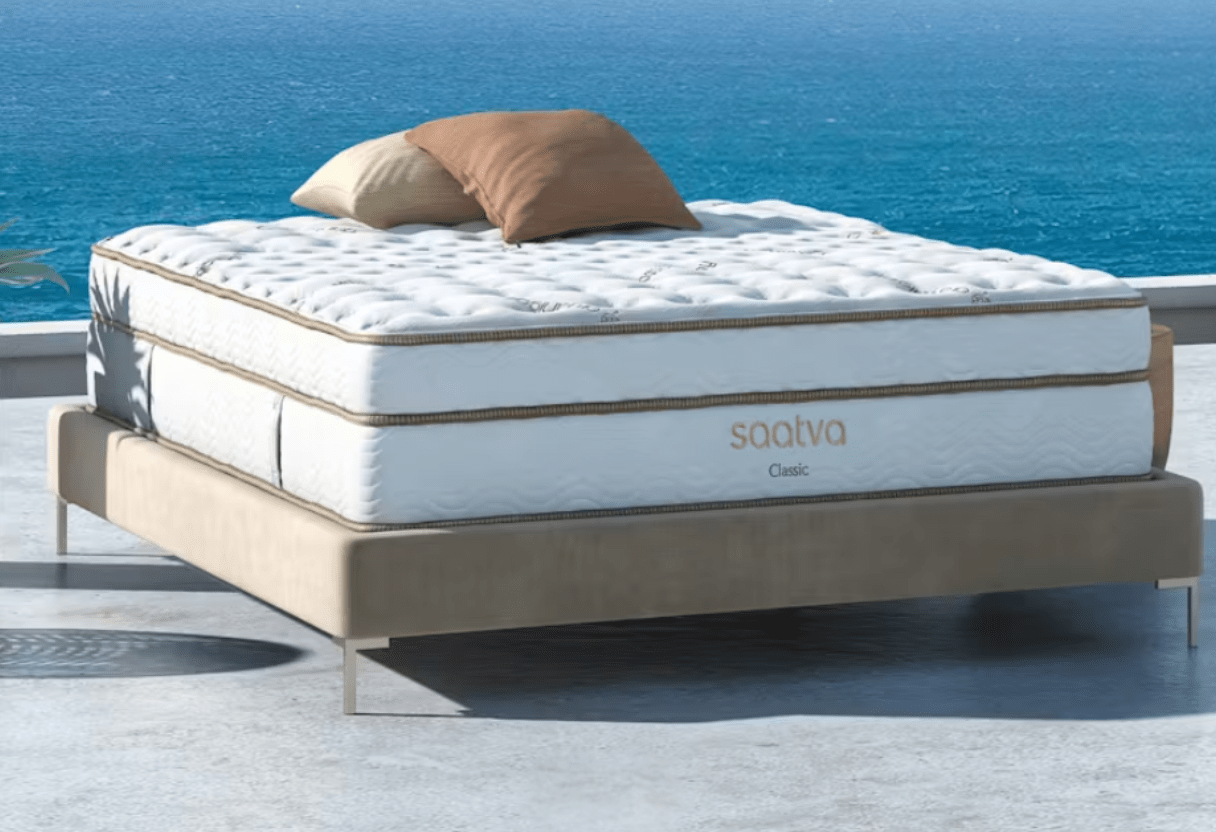
Frequently Asked Questions
Several sound frequencies have been studied for their effects on sleep quality, deep sleep, and relaxation. Certain tones reduce stress, support healing, and improve restorative sleep stages.



